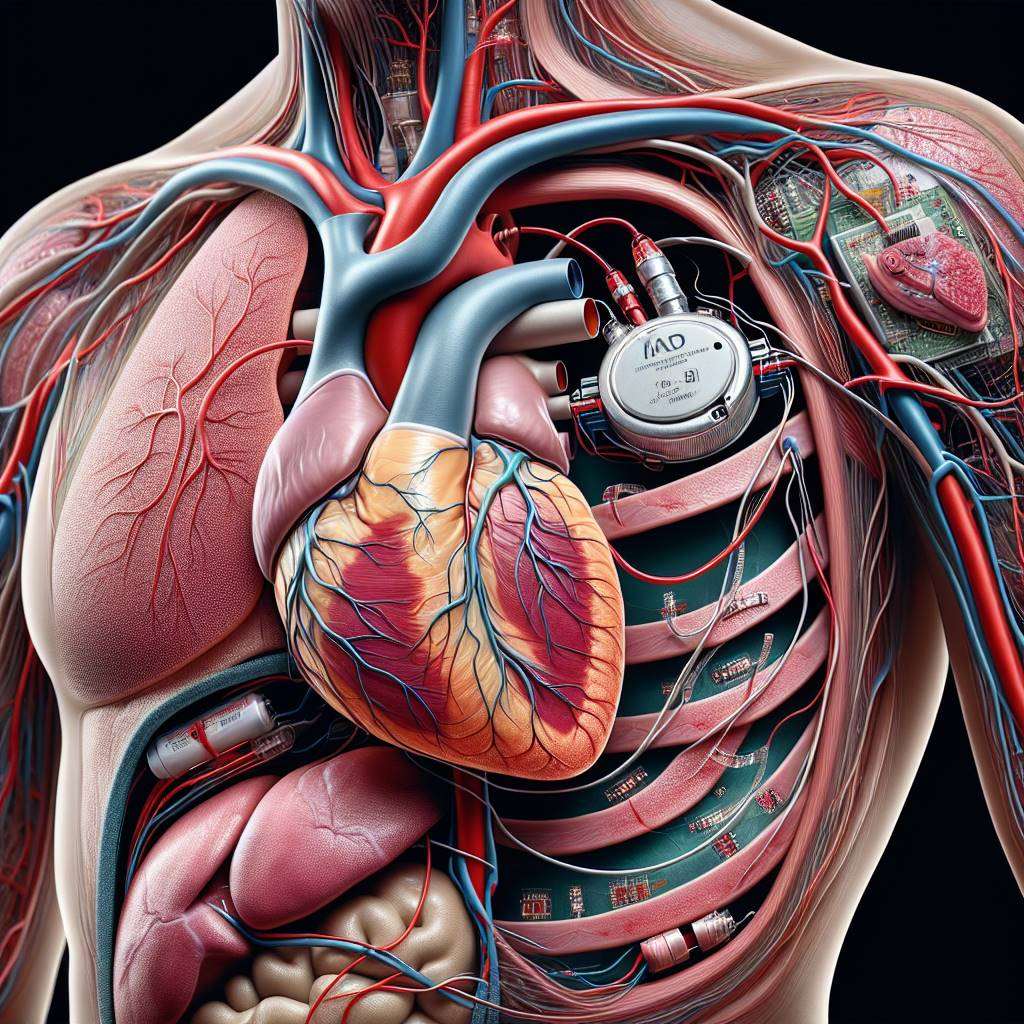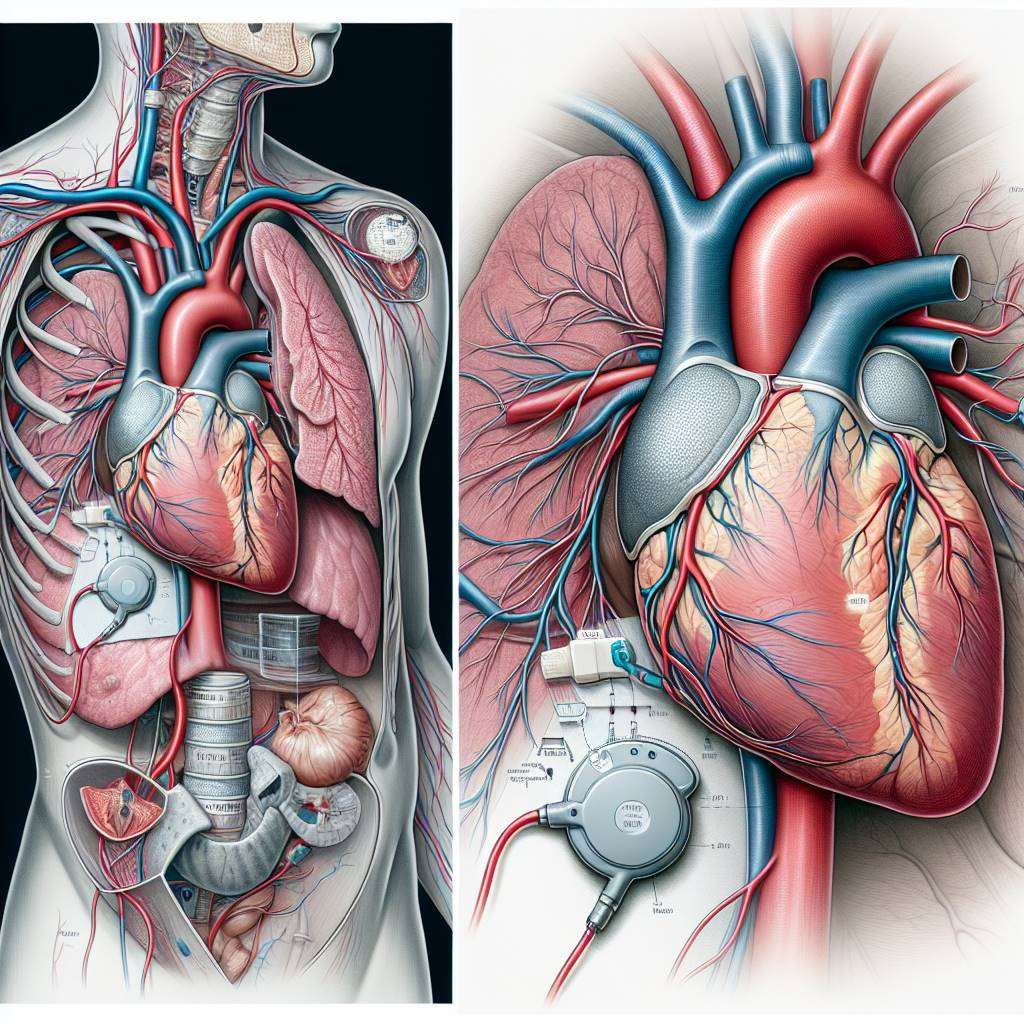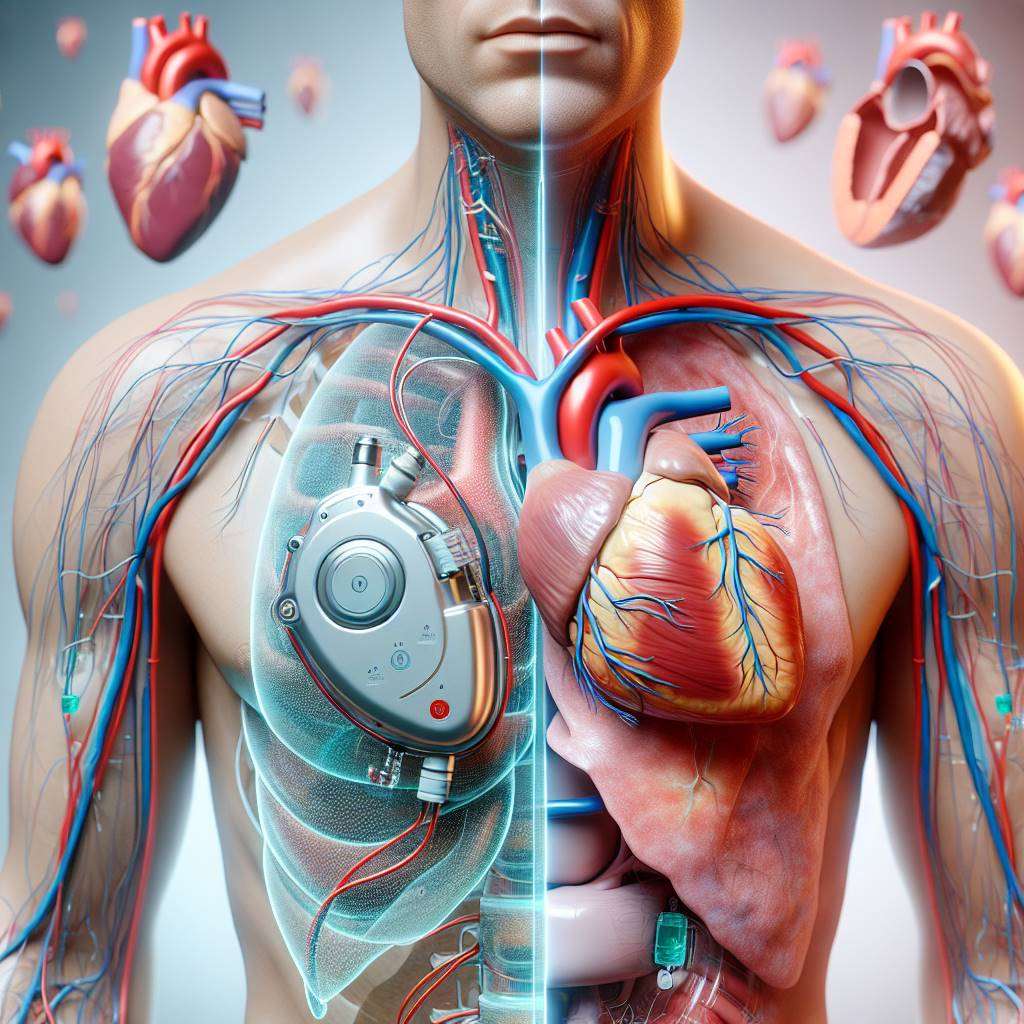An Automatic Implantable Cardioverter Defibrillator (AICD) is a life-saving device implanted in patients at risk of sudden cardiac arrest. However, there are instances when an AICD removal or upgrade becomes necessary due to device malfunction, patient health changes, or technological advancements. Understanding these scenarios is crucial for maintaining optimal heart health.
The decision to remove or upgrade an AICD depends on various factors, including device performance, patient condition, and evolving treatment needs. Timely intervention ensures the device continues to provide effective support. This article explores the reasons for AICD replacement, signs of failure, and when an upgrade might be required to ensure patient safety and well-being.
What Is an AICD and Its Purpose?
An Automatic Implantable Cardioverter Defibrillator (AICD) is a small device implanted in the chest to monitor and regulate heart rhythms. It is primarily used in patients with severe heart conditions, such as ventricular arrhythmias or those at risk of sudden cardiac arrest. The AICD detects abnormal heart rhythms and delivers electrical shocks to restore a normal heartbeat.
The device consists of a pulse generator and leads that connect to the heart. It continuously monitors the heart's electrical activity and intervenes when necessary. AICDs are critical for patients with heart failure or a history of life-threatening arrhythmias, offering them a chance to lead a safer and more active life.
Regular follow-ups with a cardiologist are essential to ensure the AICD is functioning correctly. In some cases, removal or upgrade of the device may be required to address complications or improve its effectiveness.

Signs You May Need an AICD Removal
There are several signs that may indicate the need for AICD removal. One common reason is infection at the implantation site, which can cause redness, swelling, or pain. If left untreated, infections can spread and lead to severe complications. Another reason could be device malfunction, such as inappropriate shocks or failure to detect abnormal heart rhythms.
Patients may also require removal if they experience lead displacement, where the wires connecting the device to the heart shift from their intended position. This can result in ineffective functioning of the AICD. Additionally, some patients may no longer need the device due to improved heart health or changes in their medical condition.
- Infection or inflammation at the implant site
- Device malfunction or inappropriate shocks
- Lead displacement or damage
- Improved heart function eliminating the need for the device
If you notice any of these signs, consult your cardiologist immediately to discuss the possibility of AICD removal and alternative treatment options.
When Is an AICD Upgrade Necessary?
An AICD upgrade may be necessary when the existing device no longer meets the patient's medical needs. For instance, advancements in technology may offer newer devices with improved features, such as better arrhythmia detection or longer battery life. Upgrading to a more advanced device can enhance patient safety and quality of life.
Another reason for an upgrade is the progression of the patient's heart condition. For example, a patient with worsening heart failure may benefit from a device that includes cardiac resynchronization therapy (CRT) to improve heart function. Similarly, if the leads of the current device are damaged or outdated, an upgrade may involve replacing them with newer, more effective leads.
Discussing your options with a cardiologist is essential to determine whether an upgrade is the best course of action for your specific condition.
Common Reasons for AICD Replacement or Upgrade
There are several reasons why an AICD replacement or upgrade might be required. One of the most common reasons is battery depletion, as the device's battery typically lasts 5–10 years. Once the battery is low, the entire device may need to be replaced to ensure uninterrupted functionality.
Other reasons include device recalls due to manufacturing defects, lead damage, or advancements in technology that make newer devices more effective. Patients with changing medical conditions, such as worsening arrhythmias or heart failure, may also require an upgraded device to meet their evolving needs.
| Reason |
Description |
| Battery Depletion |
Occurs after 5–10 years of use, requiring replacement. |
| Device Recall |
Manufacturing defects may necessitate replacement. |
| Lead Damage |
Broken or displaced leads may require repair or replacement. |
| Technological Advancements |
Newer devices offer improved features and functionality. |
How to Know If Your AICD Is Failing
Recognizing the signs of a failing AICD is crucial for timely intervention. One of the most common indicators is the delivery of inappropriate shocks, which can be painful and distressing. This may occur due to device malfunction or incorrect detection of heart rhythms.
Other signs include frequent alerts or beeping from the device, which may indicate low battery or technical issues. Patients may also experience symptoms such as dizziness, fainting, or worsening heart palpitations, suggesting that the device is not functioning as intended.
Regular check-ups with your cardiologist and monitoring of the device's performance are essential to detect and address any issues early. If you suspect your AICD is failing, seek medical attention immediately to prevent potential complications.
Risks and Benefits of AICD Removal
An Automatic Implantable Cardioverter Defibrillator (AICD) is a life-saving device for patients with severe heart conditions. However, there are instances where its removal becomes necessary. The risks of AICD removal include potential infection, damage to surrounding tissues, or complications during surgery. These risks are minimized when performed by experienced cardiac surgeons.
On the other hand, the benefits of removal include eliminating device-related complications, such as lead fractures or device malfunctions. It may also be necessary if the patient no longer requires the device due to improved heart function. Discussing the risks and benefits with your cardiologist is crucial to making an informed decision.

Upgrading to the Latest AICD Technology: What to Expect
Advancements in AICD technology have significantly improved device functionality and patient outcomes. If your current device is outdated or malfunctioning, an upgrade may be recommended. Modern AICDs are smaller, more efficient, and equipped with advanced features like remote monitoring and longer battery life.
During the upgrade procedure, the old device is removed, and the new one is implanted. This process typically takes a few hours and is performed under local or general anesthesia. Recovery is usually quick, with most patients resuming normal activities within a few days. Always consult your cardiologist to understand the specific benefits of upgrading to the latest technology for your condition.
What Happens During an AICD Removal Procedure?
The AICD removal procedure is a carefully planned surgical process. It begins with the administration of anesthesia to ensure patient comfort. The surgeon then makes a small incision near the device's location to access the AICD and its leads.
Using specialized tools, the device and leads are carefully extracted. If the leads are embedded in heart tissue, additional techniques may be required to remove them safely. The incision is then closed, and the patient is monitored for any complications. Recovery time varies, but most patients can return home within 24–48 hours. Discussing the procedure with your healthcare provider can help alleviate concerns and prepare you for the process.
Understanding the Costs of AICD Removal in India
The cost of AICD removal in India can vary depending on factors such as the hospital, surgeon's expertise, and the complexity of the procedure. On average, the cost ranges between ₹1,50,000 and ₹3,00,000. Additional expenses may include pre-surgical tests, hospital stay, and post-operative care.
It is essential to check whether your health insurance covers the procedure. Many insurance policies in India include coverage for cardiac surgeries, but it is advisable to confirm the details with your provider. Comparing costs across hospitals and consulting with your cardiologist can help you plan financially for the procedure.
How Long Does an AICD Last Before Replacement?
The lifespan of an AICD depends on factors such as the device model, battery usage, and the frequency of shocks delivered. On average, an AICD lasts between 5 to 10 years. Regular follow-ups with your cardiologist are essential to monitor the device's performance and battery status.
Signs that your AICD may need replacement include frequent alerts from the device, reduced battery life, or malfunctions. If a replacement is required, your doctor will schedule a procedure to implant a new device. Ensuring timely replacement is crucial to maintaining the device's life-saving functionality.
Can You Live Without an AICD After Removal?
An Automatic Implantable Cardioverter Defibrillator (AICD) is a life-saving device for patients at risk of sudden cardiac arrest. However, there are situations where its removal becomes necessary, such as infection, device malfunction, or when the patient’s heart condition improves significantly.
Living without an AICD depends on the underlying heart condition. If the risk of arrhythmias has reduced due to successful treatment or lifestyle changes, removal may be safe. However, for patients with persistent heart issues, removal without replacement could increase the risk of complications.
It is crucial to consult a cardiologist to assess your heart health and determine whether you can safely live without an AICD. Regular follow-ups and monitoring are essential to ensure your condition remains stable.

Preparing for an AICD Upgrade Surgery
Upgrading an AICD may be necessary when the current device is outdated, has a depleted battery, or cannot meet the patient’s evolving medical needs. Preparation for this procedure involves several important steps to ensure safety and effectiveness.
Before surgery, your doctor will perform tests such as an ECG, echocardiogram, or blood tests to evaluate your heart’s condition. You may also need to adjust medications, such as blood thinners, to reduce surgical risks.
Here are some key preparation tips:
- Discuss your medical history and current medications with your doctor.
- Follow fasting instructions before the procedure.
- Arrange for someone to accompany you to the hospital and assist post-surgery.
Proper preparation ensures a smoother surgery and recovery process.
Recovery After AICD Removal or Replacement
Recovery after an AICD removal or replacement varies depending on the complexity of the procedure and the patient’s overall health. Most patients can resume light activities within a few days, but full recovery may take a few weeks.
During recovery, it’s essential to follow your doctor’s instructions. Avoid strenuous activities and heavy lifting for at least 4–6 weeks to allow the surgical site to heal. Watch for signs of infection, such as redness, swelling, or fever, and report them to your healthcare provider immediately.
Regular follow-up appointments are crucial to monitor your heart’s condition and the performance of the new or upgraded device. Your doctor may also recommend lifestyle changes, such as a heart-healthy diet and regular exercise, to improve your overall cardiac health.
Choosing the Right Specialist for AICD Procedures
Selecting the right specialist for your AICD procedure is critical to ensuring the best outcomes. A qualified electrophysiologist or cardiologist with experience in device implantation and management is ideal for handling these complex procedures.
When choosing a specialist, consider the following factors:
- Experience: Look for a doctor with extensive experience in AICD implantation, removal, and upgrades.
- Credentials: Ensure the specialist is board-certified in cardiology or electrophysiology.
- Patient Reviews: Check reviews or testimonials to gauge patient satisfaction and outcomes.
Additionally, the hospital or clinic should have advanced facilities and a dedicated cardiac care team. A well-equipped center ensures better management of potential complications and faster recovery.
FAQs About AICD Removal and Upgrade Procedures
Patients often have questions about AICD removal or upgrade procedures. Here are answers to some common queries:
1. Is AICD removal painful?
Most patients experience mild discomfort during recovery, but the procedure itself is performed under anesthesia to minimize pain.
2. How long does an AICD last?
An AICD typically lasts 5–10 years, depending on usage and battery life. Regular check-ups can help determine when an upgrade is needed.
3. What are the risks of AICD removal?
Risks include infection, bleeding, or damage to surrounding tissues. However, these are rare when performed by an experienced specialist.
Always consult your doctor for personalized advice and to address any concerns about your specific condition.
Best Aicd Implantation Doctors in India
Dr. Balbir Singh, a renowned cardiologist at Medanta - The Medicity, Gurugram, specializes in electrophysiology and cardiac device management with over 30 years of experience. Another expert is Dr. Praveen Chandra from Fortis Escorts Heart Institute, Delhi, a leading interventional cardiologist with extensive expertise in AICD procedures and over 25 years of experience. Both doctors are globally recognized for their medical excellence and patient care.
Learn more on best aicd implantation doctors in india
Best Aicd Implantation Hospitals in India
Fortis Escorts Heart Institute, Delhi, a NABH-accredited hospital, is a leader in cardiac care, offering advanced AICD procedures with a multidisciplinary team. Medanta - The Medicity, Gurugram, a JCI-accredited hospital, is known for its state-of-the-art electrophysiology labs and robotic-assisted surgeries. Both hospitals provide exceptional international patient services and have a track record of successful outcomes.
Find more best aicd implantation hospitals in india
Aicd Implantation Cost in India
The cost of AICD Removal or Upgrade in India typically ranges from INR 2,50,000 to INR 6,00,000 (approximately USD 3,000 to USD 7,500). Factors influencing costs include the doctor’s expertise, hospital infrastructure, and procedure complexity. The average hospital stay is 2–4 days. India offers a significant cost advantage compared to Western countries, with options for insurance coverage and third-party financing.
Learn aicd implantation cost in india
Aicd Implantation Treatment in India
AICD Removal or Upgrade in India involves careful evaluation, device extraction, and replacement if needed. Advanced techniques like laser-assisted lead extraction and minimally invasive procedures are commonly used. Recovery typically takes 1–2 weeks. Top hospitals in India follow global medical protocols and adopt innovations like robotic-assisted surgeries to ensure safety and precision.
Learn on Aicd Implantation Treatment in India
FAQs
What is an AICD?
An AICD (Automatic Implantable Cardioverter Defibrillator) is a device implanted in the chest to monitor and regulate abnormal heart rhythms, preventing life-threatening arrhythmias.
When is AICD removal necessary?
AICD removal may be required due to device malfunction, infection, or if the device is no longer needed based on the patient’s condition.
What are the risks of AICD removal?
Risks include bleeding, infection, or damage to blood vessels. However, these risks are minimized when performed by experienced specialists.
How is an AICD upgrade performed?
An AICD upgrade involves replacing the existing device with a newer model, often with additional features like remote monitoring or enhanced battery life.
How long does recovery take after AICD removal or upgrade?
Recovery typically takes 1–2 weeks, during which patients are advised to avoid strenuous activities and follow their doctor’s instructions.
Can AICD procedures be covered by insurance?
Yes, most health insurance policies in India cover AICD procedures, including removal or upgrade, depending on the terms of the policy.
What technologies are used in AICD procedures in India?
Technologies like laser-assisted lead extraction, 3D imaging, and robotic-assisted surgeries are commonly used in leading Indian hospitals for AICD procedures.
Are AICD procedures in India safe?
Yes, Indian hospitals adhere to international medical standards, ensuring high safety and success rates for AICD procedures.
What is the cost advantage of AICD procedures in India?
AICD procedures in India are significantly more affordable than in Western countries, with no compromise on quality or patient care.
How do I choose the right hospital for AICD procedures in India?
Choose a hospital with NABH/JCI accreditation, experienced specialists, and advanced technologies for the best outcomes in AICD procedures.
Understanding AICDs: Myths and Mechanisms Explained
Automated Implantable Cardioverter Defibrillators (AICDs) are crucial devices for individuals at risk of life-threatening arrhythmias. However, many misconceptions surround their functionality and purpose. To clarify these misunderstandings, it's essential to explore the common myths about AICDs. For a deeper dive into these misconceptions, check out our blog on myths about AICDs.
In addition to understanding the myths, it's important to differentiate between the types of interventions AICDs provide. Many patients wonder about the difference between AICD shocks and antitachycardia pacing. Each method serves a unique purpose in managing arrhythmias, and knowing these distinctions can empower patients in their treatment journey. Learn more about these differences in our article on AICD shocks versus antitachycardia pacing.
By educating yourself on these topics, you can better navigate the complexities of AICDs and make informed decisions regarding your heart health.